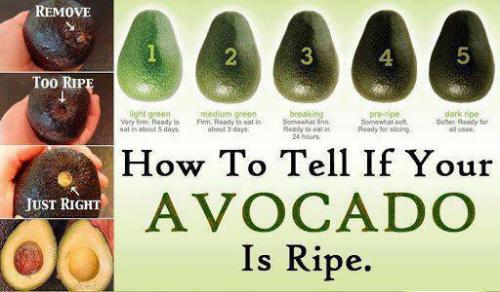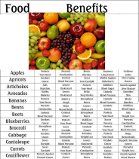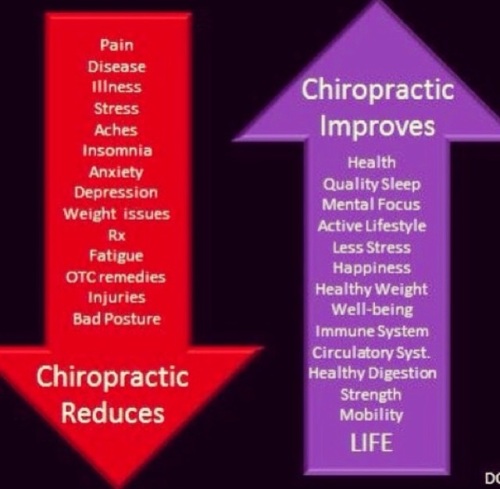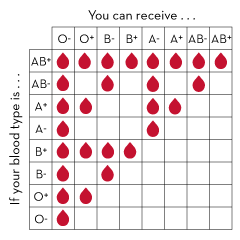50 Foods You Really Should Be Eating
Dave Golokhov, AskMen
Think popping a multivitamin once per day is good enough to cover all of the bases your diet is missing? Think again. Your body doesn’t absorb nearly as many minerals and vitamins from that pill as you might believe. Instead, give your body a powerful boost by adding some natural superfoods to your diet.
1. Kale
If Popeye knew about kale, he’d never have bothered with spinach. This robust, dark leafy green is chock-full of nutrients like iron, vitamins A, C and K, fiber, antioxidants and is a great detoxifier (particularly for your liver).
2. Chia Seeds
Prized by the Mayans and Aztecs, this superfood is once again becoming a star in the modern-day diet. Add these to your diet to get a boost of fiber, omega fatty acids, calcium — and it’s also a complete protein that’s easy to add to salads and smoothies.
3. Spinach
Your mother always told you to eat this vibrant, leafy green if you want to grow up big and strong. What she didn’t mention is that it’s also great for preventing prostate cancer, is an excellent source of vitamins A, C and K, is loaded with antioxidants and is a good source of protein.
4. Swiss Chard
Swiss chard grades highly among the ranks of nutrient-packed leafy greens, but the best part might be the taste. Kale can be tough, collards are heavy and some people hate spinach, Swiss chard tastes similar to the very neutral romaine lettuce. Best of all, it has all of the same nutrients as its brethren.
5. Collard Greens
Collard greens don’t get the type of love that kale does, but they still bring the same nutrients to the table, like vitamins C and K. Collards also give you vitamin E, folate and manganese, and similarly, are known as a cancer-fighter.
6. Bee Pollen
Bee pollen is an incredible superfood that is considered to be one of the most complete foods you can eat. It is a richer source of protein than any animal source (percentage-wise) and it contains all of the essential amino acids as well. Throw in massive amount of enzymes (over 5,000), phytonutrients, vitamins (A, B, C and E), and a ton of minerals, and you’ll be giving your body a big boost. Some of those benefits include increased energy, muscle growth, a stronger immune system, and an enhanced sex drive.
7. Moringa Leaf
Moringa leaf is still a well-kept secret, but those who are up on it are aware that this is one of the most nutrient-packed plants ever found. You’ll get a good dose of iron, calcium, fiber, magnesium, potassium, protein, and amino acids. And all of this from a leaf!
8. Cacao Beans
Chocolate lovers can indulge all they want in cacao beans without feeling guilty. Although the chocolate that is near and dear to us all is made from this wonderful ingredient, the truth is that after heating, processing, adding a ton of dairy and sugar, and putting it in candy-bar wrapping, this superfood turns super unhealthy. Stick with the beans — either as a snack or by adding them to smoothies, and you’ll be giving your body one of the highest antioxidant-rich foods around.
9. Blueberries
Blueberries are great for the brain, as they help improve your memory, as well as prevent the onset of any cognitive problems that tend to come with age. The best part is that this popular fruit is commonly available in the frozen section, and most of its important antioxidants are preserved even through freezing.
10. Turmeric
Turmeric powder is a spice that’s often found in curries that has plenty of health benefits. It’s not only known for its yellow pigment; it also helps combat free radicals, is great for inflammation and protects against memory loss. Although it’s better recognized in its powder form, nowadays, a number of markets will carry the turmeric root as well, which looks very similar to ginger root.
11. Garlic
Sure, it’ll make your breath stink, but otherwise, it’s worth it. This age-old superfood is renowned for giving your immune system a boost and warding off many types of cancer.
12. Acai
This tiny purple berry is packed with antioxidants that’ll help fend off cancer, heart disease and even aging. It’s one of the rare fruits that contains oleic acid, which is the same healthy fat that’s found in olive oil, and even has the ideal essential amino acid complex, which is integral to muscle regeneration.
13. Lingonberries
Meet one of the newest berry superfoods on the block: lingonberries. They’re loaded with plant polyphenols, which means these tart little red berries contribute in a number of fashions. They can lower inflammation, fight staph infections, replace antioxidants, add red blood cells and increase liver enzymes.
14. Beets
Beets can be messy to work with, but those who go through pain get the gain at the end. Beets are a unique source of betalains, which is a phytonutrient that can combat tumors. Make sure you don’t throw away the beet greens, as they are high in lutein, which is related to and has similar benefits as vitamin A.
15. Black Beans
Black beans make this list because they’re a very underrated source of protein. One cup provides around 15 grams of protein, and the best part is that you don’t have to deal with any of the saturated fats that you might get from animal protein sources, like red meat.
16. Oats
Oats might seem like a boring breakfast option, but they’re a great choice for those who need to lower their cholesterol. Whole grain oats help do exactly that, and help with the maintenance of your blood-sugar levels. Just add some blueberries, cinnamon or honey to liven up the oats.
17. Avocado
Avocado is another one of those paradoxical high-fat foods that’s still good for your body. That’s because it contains good fats, as well as oleic acid, lutein, folate, vitamin E and glutathione. All of those assist in deflecting heart disease and cancer.
18. Cod Liver Oil
Cod liver oil may not be the most delicious of items you’ll pull out of your fridge, but among health nuts, it’s a delicacy. Taking daily doses of cod liver oil is known to prevent arthritis and reduce muscle and joint pain. It also has the healthy fats, which means it’s good for lowering cholesterol, maintaining mental health and preventing heart disease.
19. Broccoli
Maybe mom wasn’t completely accurate when she said broccoli makes you smart — but you’d be smart to eat it. The superfood we’ve loved to hate as a kid helps detoxify the body and is a vegetable with one of the highest vitamin C concentrations. It’s also developing into a game-changer in the role of cancer prevention.
20. Green Tea
Green tea gives your metabolism a kick in the butt by speeding it up. People who drink it burn more calories throughout the day (roughly 50 to 100 more). It also helps regulate glucose levels in the body (good for those battling diabetes), helps reduce bad cholesterol and slows the brain’s aging process.
21. Walnuts
Boost your mood by adding more walnuts to your diet. Not only do these guys have a healthy amount of zinc, manganese and copper, they’re also loaded with serotonin, which is a chemical in our brain directly tied to happiness and feeling good. As a matter of fact, walnuts have among the highest values of serotonin you can find.
22. Almonds
Almonds are one of the most popular superfoods on this list that most people already consume. What could possibly be bad about a high-fat food that’s good for your heart? These guys are loaded with good fats which promote heart health and lower bad cholesterol. Almonds are also a quality source of manganese, vitamin E, magnesium and tryptophan.
23. Pine Nuts
This tiny-but-tasty nut sometimes gets lots in the shuffle, but it’s a super contributor all across the board. From vitamin A and lutein, which help improve eyesight, to vitamin D (stronger bones), to vitamin C (robust immune system) to iron, protein and magnesium, make sure you take your dose.
24. Quinoa
Vegetarians and vegans have been up on quinoa for years, but now everyone else is catching up. It offers a great source of non-animal protein with about eight grams in one cup. It’s also a good source of fiber and iron.
25. Yogurt/Kefir
Not all bacteria is bad for you. Your body needs some of the good kind to help the digestive tract and yogurt has those. Your colon will be happy (and function better) if you add more of these intestine-friendly bacteria to your diet.
26. Coconut Oil
Coconut oil is a hot commodity these days, as bakers and fryers have been reaching for this fat rather than butter, margarine or processed oils. It’s lauded for its lauric acid, which helps prevent some heart problems like high cholesterol and high blood pressure. In short, the saturated fats in coconut oil are not as harmful to you as the ones in commercially processed oils.
27. Coconut Water
Coconut water is an excellent alternative to a sports drink. Many people champion its hydrating powers, as it does a good job replacing lost fluids. It’s also a great source of potassium (more than four bananas).
28. Ginger Root
Ginger root is a staple in Indian and Chinese cuisine. It’s been known to do wonders for the stomach, namely easing stomach aches, eliminating gas and soothing the intestinal tract. Don’t just use it in stir fries, though; throw a little knob into your morning smoothie to give it some kick.
29. Cayenne
Cayenne does more than just spice things up. It adds vitamins A, C and K, and is best known for its high amounts of capsaicin, which is good for fighting inflammation. Those trying to trim down a bit might want to add some more cayenne to their diet, as it can curb appetite and raises your body temperature, which will help you burn some extra calories.
30. Apple Cider Vinegar
Some people swear by the detoxifying effects of apple cider vinegar. It helps balance your body’s alkaline pH levels and can stimulate cardiovascular circulation.
31. Bulgur
Eating whole-grain foods is believed to reduce a number of cardiovascular risks. That’s why this 100% whole-wheat grain is a good addition to your diet. It’s a sound source of fiber, protein, iron, and vitamin B-6.
32. Pistachios
Looking to lower your cholesterol? Here’s one option that’s not in pill form: pistachios. They’re stocked with phytosterols and soluble fiber, both of which have been shown to lower LDL (bad cholesterol).
33. Red Peppers
Red bell peppers often get overlooked as a superfood, but they’re loaded in their own right. There’s more than three times the daily recommended vitamin C intake per pepper, plus vitamin A, antioxidants and lycopene, which reduces the risk of prostate cancer.
34. Papaya
If you’re feeling the onset of a cold, reach for this tropical fruit instead of an orange next time. One papaya has more than three times the daily recommended intake of vitamin C and is also stocked with flavonoids, vitamin B, potassium, magnesium and fiber. All in all, it’s good for the cardiovascular system and reduces the risk of colon cancer.
35. Black Garlic
Black garlic is made by treating regular garlic with heat and humidity for about a month. Because of the gentle aging process, its health benefits are maintained, but its flavor is much more palatable than regular garlic. This version is sweet with hints of balsamic, tamarind and molasses.
36. Cinnamon
Seeing this one on the list isn’t an excuse to go scarf down multiple cinnamon buns. However, this age-old spice has been known to reduce the risk of cancer, cholesterol and also helps regulate blood-sugar levels.
37. Flax Seeds
Small in size but large in returns, flax seeds are easy to add to salads, cereals and soups. They are best known for being a good source of fiber, which helps keep your exits smooth. But they’re also a good source for omega-3 fatty acid and lignans, which reduce breast cancer in women and prostate cancer in men.
38. Goji Berries
Typically, we associate oranges with vitamin C, but Goji have nearly 500 times more (per ounce) than those round orange guys. They also pack a vitamin B-complex punch, as well as vitamin E and a slew of antioxidants.
39. Spirulina
Spirulina is an algae that’s loaded with all sorts of super benefits. It’s a high-quality source of protein, gives you the Omegas (3, 6 and 9), a slew of vitamins (A, B-2, B-3, B-6, B-9, C, D, E) and has 26 times the calcium of milk. It has a rank taste, though, so it’s best to try to hide it in smoothies.
40. Maca Root/Powder
No, it’s not just a running gag from the fourth season of Arrested Development. Maca is typically found in powder form these days, as juice bars use it to give their smoothies a boost. This nutrient-rich root has been used by Native Americans for thousands of years, and it helps out your endocrine system, which should — among many other things — increase your energy, boost your sex drive and balance your hormones.
41. Pumpkin Seeds
Don’t throw these guys out when you’re scooping them out of squashes or pumpkins; they’re a gold mine when it comes to nutritional value. These edible seeds are rich in magnesium, zinc, and even tryptophan, which helps you sleep.
42. Wheatgrass
While the taste is sometimes hard to swallow, the juice extracted from wheatgrass has wonderful effects on the body. It does everything — stimulating the thyroid, boosting the red blood cell count, detoxifying the blood and gastrointestinal tract, fending off cancer and providing beneficial enzymes to the body.
43. Camu Camu
Camu Camu is a trendy superfood that’s making the rounds in North America. That’s because we love our vitamin C — the most used supplement in North America — and camu camu is loaded with it. One teaspoon is 1,180 times your recommended daily intake.
44. Chlorella
Those looking to detoxify/remove some of those heavy metals in the body might want to try chlorella. This single-cell algae is one of the best detoxifiers you’ll find. Inside your body, it binds to metals, chemicals and pesticides in your digestive tract and pulls them out.
45. Lucuma
This tropical South American fruit is packed with antioxidants and B vitamins. It’s been known to boost your immune system and prevent a number of ailments — including cancer. It’s a sweet fruit, so it’s an easy add to smoothies if you’re using the powder form.
46. Maqui Berry
Most berries are high in antioxidants, but this Chilean berry is one of the richest sources you’ll find. It also offers a healthy dose of vitamin C, calcium, iron, potassium and anti-inflammatory properties.
47. Hemp
We’re not talking about the kind you smoke; that’s hemp’s seedier cousin, marijuana. Hemp seeds are great for your body, as they help with digestion. With its protein and fiber contents, hemp is more filling than you’d think. It also contains Omega-3 and 6 fatty acids, as well as essential amino acids.
48. Sacha Inchi
We’re a little slow on the Inca peanut: Amazon rainforest inhabitants have been using this superfood to boost their bodies for centuries. It’s one of the richest sources of Omega fatty acids you can find, and it’s also filled with fiber, antioxidants and protein — plus it contains every amino acid.
49. Makuna Honey
Manuka honey is prized for its antibacterial properties. As odd as that sounds, this rare form of honey — produced from the Manuka trees in Australia and New Zealand — is known for its healing powers. The best part is that, unlike Buckley’s Mixture, this stuff tastes pretty good.
50. Extra Virgin Olive Oil
Extra virgin olive oil has long been considered a healthy oil because it helps decrease the risk of heart disease. Studies have shown that people who regularly consume olive oil have lower levels of cancer than those who instead opt for butter or other high-saturated fats. Just make sure that you don’t use olive oil on high heats, as it breaks down and then flips into a very unhealthy choice for your body.
Read more: http://www.askmen.com/sports/galleries/top-50-superfoods-4.html#ixzz2nBbcxML4





























